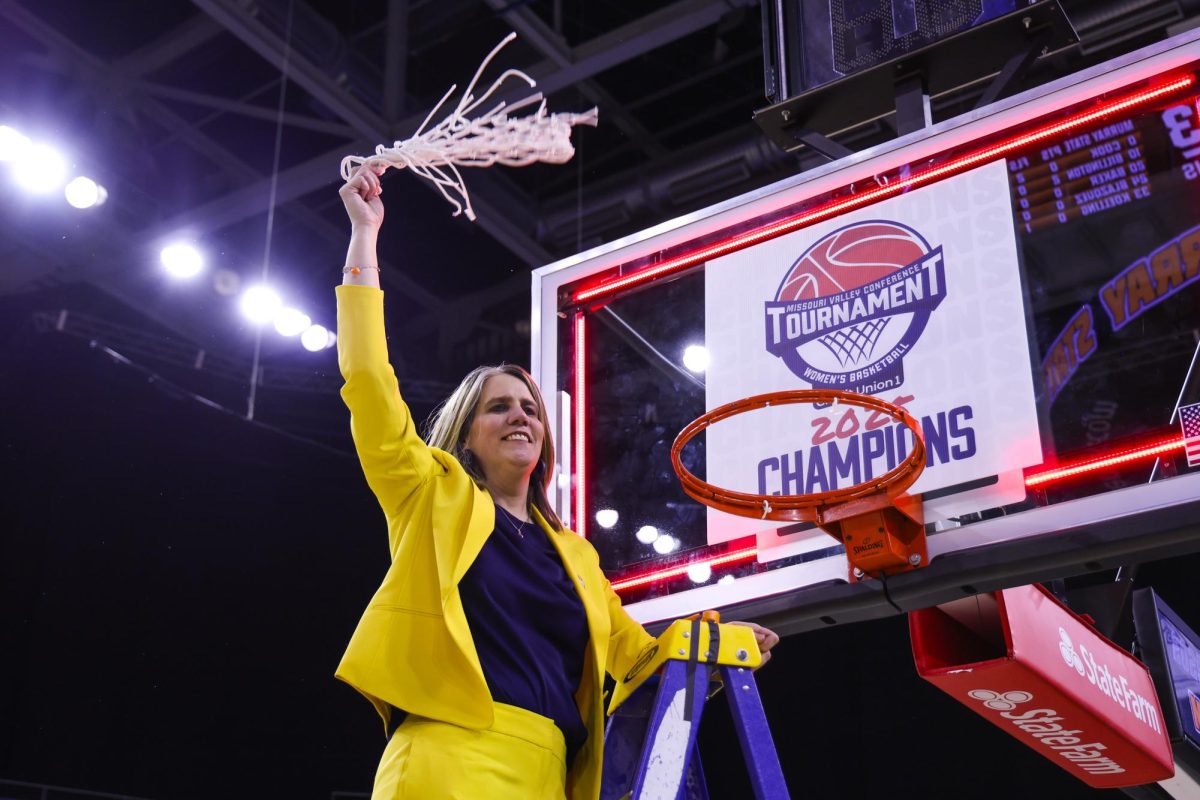Gage Johnson
Editor-in-Chief
gjohnson17@murraystate.edu
After the sound of basketballs bouncing on the hardwood floor and fans roaring in the stands were nowhere to be found in March because of the pandemic, the hope for a full season of college basketball has been reignited with a start date of Nov. 25.
On Sept. 16, the Division I Council voted to move the official first contest date of the 2020-21 season to Nov. 25, 15 days past the original starting date for the season. Along with this new starting point came a slew of guidelines.
Teams will not be able to host any exhibition games or closed scrimmages before the season’s start. According to the NCAA’s announcement, the pushing back the beginning of the season is to help reduce the risk of COVID-19 spread.
By starting in late November, nearly 75% of schools will have ended its fall term or moved to remote instruction and online final exams. This helps the student athletes have less contact with the student body of schools.
“The new season start date near the Thanksgiving holiday provides the optimal opportunity to successfully launch the basketball season,” said NCAA Senior Vice President of Basketball Dan Gavitt in the NCAA’s announcement. “It is a grand compromise of sorts and a unified approach that focuses on the health and safety of student-athletes competing towards the 2021 Division I basketball championships.”
This could create a bubble of sorts for collegiate athletics, just without being in one centered location like the NBA has done for the 2020 playoffs.
With four games being cut from the maximum number of games, men’s basketball programs have three scheduling options:
- 24 regular season games and participate in one multiple-team event that includes up to three games
- 25 regular-season games and participate in one multiple-team event that includes up to two games
- 25 regular-season games if a team does not participate in a multiple-team event.
Women’s basketball programs have similar guidelines, stating that they can schedule 23 regular season games and compete in a multiple-team event that includes four games or schedule 25 regular season games.
Programs can begin practicing on Oct. 14 and can have up to 30 practices during the preseason. Players will be allotted 20 hours of work out time each week, with a maximum of four hours a day and one day off during each week.
The council also voted on and approved a transition practice period that will take place from Sept. 21 to Oct. 13, to help athletes prepare for the upcoming season with the challenges players are facing both mentally and physically as a result of the pandemic.
During this period, teams can partake in strength and conditioning activities, meetings and skill instruction for a max of 12 hours per week, with eight hours maximum being allocated to skill instruction. Players must also have two days a week off during this transition period. Teams will be able to begin full practice on Oct. 14.
Murray State men’s and women’s basketball programs do not have schedules released for the 2020-21 season at this time. The Murray State News reached out to Murray State Athletic Director Kevin Saal and did not receive an answer by press time.






























































































